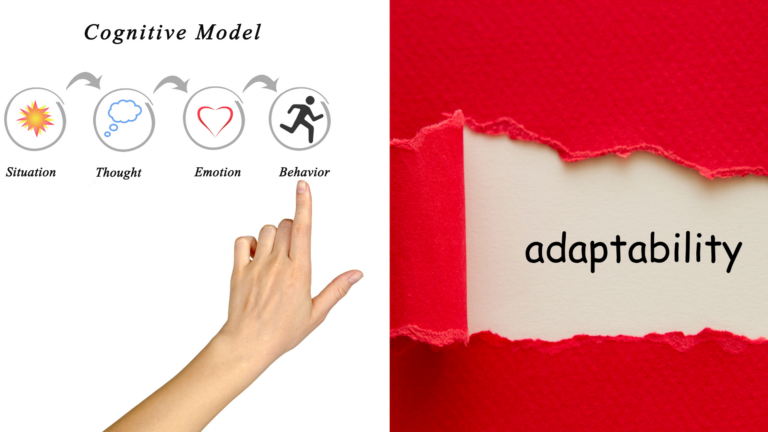In today’s fast-paced and ever-changing world, the ability to adapt to changes and challenges is essential for success. This holds not only for adults but also for students who are preparing to navigate the uncertainties of the future. One key skill that can help students thrive in this dynamic environment is cognitive flexibility.
Cognitive flexibility refers to the mental capacity to switch between different thoughts, perspectives, and problem-solving strategies. It enables individuals to adapt to new situations, think creatively, and approach challenges with an open mind. As educators, it is crucial to understand the importance of building cognitive flexibility in students and to equip them with the necessary tools to develop this skill.
Several factors influence cognitive flexibility in students. Age and development play a significant role, as younger students may have a more limited cognitive flexibility compared to older ones. Additionally, learning styles impact how students process information and approach tasks, affecting their ability to adapt to changes. The environment in which students learn and grow also plays a crucial role, as a supportive and diverse environment can enhance cognitive flexibility.
To improve cognitive flexibility in the classroom, educators can employ various strategies. Incorporating diverse teaching methods, such as visual aids, group discussions, and hands-on activities, can help stimulate different areas of the brain and foster flexibility in thinking. Promoting problem-solving and critical thinking skills encourages students to explore different solutions and consider alternative perspectives. Furthermore, encouraging open-mindedness and adaptability in the classroom creates an environment where students feel comfortable exploring new ideas and embracing change.
Technology can also play a significant role in building cognitive flexibility. Online learning tools provide students with opportunities to engage with interactive content and adapt their learning experience to their individual needs. Gaming and simulation can promote cognitive flexibility by presenting students with complex challenges that require flexible thinking and problem-solving skills. However, the impact of social media on cognitive flexibility is a topic of debate, as excessive usage may hinder deep thinking and attention span.
Despite the benefits of building cognitive flexibility, there are challenges that educators may face. Resistance to change is a common hurdle, as students may be comfortable with established routines and reluctant to embrace new approaches. Breaking old habits can also be difficult, especially if students have been conditioned to think rigidly. Additionally, addressing learning difficulties is crucial, as students with learning disabilities may require additional support and tailored strategies to build cognitive flexibility effectively.
In this blog post, we will delve deeper into the concept of cognitive flexibility, exploring the factors that influence it in students. We will discuss various strategies that educators can employ to improve cognitive flexibility in the classroom, as well as the role of technology in this process. Finally, we will address the challenges that educators may face and provide practical tips to overcome them. By building cognitive flexibility in students, we can equip them with the skills necessary to adapt to changes and challenges, fostering their success in an ever-evolving world.
Understanding Cognitive Flexibility: What it is and Why it’s Important
Cognitive flexibility is a cognitive skill that enables individuals to adapt their thinking and behaviour to changing situations or challenges. It involves the ability to shift attention, switch between different tasks or perspectives, and think creatively to solve problems. Cognitive flexibility is not just about being open-minded; it also encompasses the capacity to consider multiple possibilities, generate alternative solutions, and adjust strategies as needed.
The importance of cognitive flexibility cannot be overstated, particularly in today’s rapidly changing world. Here are some key reasons why developing cognitive flexibility is crucial for students:
- Adapting to Change: Change is inevitable, and students who possess cognitive flexibility are better equipped to adapt to new situations, whether it’s transitioning to a new grade level, entering college, or entering the workforce. They can quickly adjust their thinking and behaviour to meet the demands of unfamiliar environments.
- Problem-solving Skills: Cognitive flexibility is closely linked to problem-solving abilities. When faced with complex problems or challenges, individuals with cognitive flexibility can approach them from various angles and consider different perspectives. This enables them to generate innovative solutions and think critically.
- Creativity and Innovation: Cognitive flexibility fosters creativity by allowing individuals to think outside the box and consider unconventional ideas. It encourages divergent thinking, which is essential for innovation and finding unique solutions to problems.
- Resilience and Stress Management: Cognitive flexibility helps students develop resilience by enabling them to bounce back from setbacks and adapt to unexpected circumstances. It reduces stress levels and promotes a more positive mindset, as individuals can reframe challenges as opportunities for growth.
- Enhanced Learning and Academic Performance: Students with cognitive flexibility can better absorb new information, make connections between different topics, and apply their knowledge in diverse contexts. This improves their learning outcomes and academic performance across various subjects.
- Social and Emotional Well-being: Cognitive flexibility plays a significant role in social interactions and emotional well-being. It allows students to understand and appreciate different perspectives, fostering empathy and tolerance. Additionally, it helps individuals regulate their emotions, manage conflicts, and navigate social relationships effectively.
- Future Employability: In an increasingly competitive job market, employers value employees who can adapt to changing work environments, think critically, and innovate. Cognitive flexibility is a highly sought-after skill that enhances employability and sets individuals apart in their careers.
Understanding the significance of cognitive flexibility lays the foundation for creating effective strategies and interventions to cultivate this skill in students. By recognizing the benefits of cognitive flexibility, educators can prioritize its development and create an environment that nurtures adaptability, critical thinking, and creativity in students.
Factors Influencing Cognitive Flexibility in Students
Several factors influence the development of cognitive flexibility in students. By understanding these factors, educators can tailor their approaches and interventions to effectively foster cognitive flexibility in their students. Here are some key factors that play a role in shaping cognitive flexibility:
Role of Age and Development
Age and developmental stage significantly impact cognitive flexibility. Younger students may have more limited cognitive flexibility compared to older ones. As children grow and mature, their cognitive abilities, including attention-shifting, problem-solving, and abstract thinking, develop and become more flexible. Therefore, educators should consider age-appropriate strategies and expectations when promoting cognitive flexibility in students.
Influence of Learning Styles
Learning styles, such as visual, auditory, or kinesthetic preferences, can affect cognitive flexibility. Students with different learning styles may process information and approach tasks in distinct ways. Educators should recognise and accommodate these differences to ensure that all students have the opportunity to develop cognitive flexibility effectively. Providing a variety of instructional methods that cater to different learning styles can enhance cognitive flexibility across the student population.
Impact of Environment
The learning environment plays a crucial role in shaping cognitive flexibility. A supportive and diverse environment that encourages exploration, critical thinking, and open-mindedness can foster cognitive flexibility in students. On the other hand, an environment that promotes rigidity, conformity, or fear of failure may hinder the development of cognitive flexibility. Educators should create a safe and inclusive classroom atmosphere that values diverse perspectives and promotes flexibility in thinking.
Cultural and Socioeconomic Factors
Cultural and socioeconomic factors can influence cognitive flexibility in students. Students from different cultural backgrounds may have varying beliefs, values, and problem-solving approaches. Educators should be mindful of these cultural differences and ensure that teaching strategies and materials are culturally responsive. Socioeconomic factors, such as access to resources and support, can also impact cognitive flexibility. Providing equal opportunities and support to all students, regardless of their socioeconomic background, is crucial for fostering cognitive flexibility.
Impact of Parental and Family Influence
Parents and families play a significant role in shaping cognitive flexibility in students. Parental attitudes, expectations, and parenting styles can impact a child’s ability to think flexibly. Parents who encourage curiosity, independent thinking, and problem-solving skills can contribute to the development of cognitive flexibility in their children. Educators should foster strong partnerships with parents and provide resources and guidance on how parents can support cognitive flexibility at home.
By considering these factors, educators can create a holistic approach to foster cognitive flexibility in students. Recognizing the influence of age and development, learning styles, the learning environment, cultural and socioeconomic factors, and parental and family influence provides a comprehensive understanding of the factors that shape cognitive flexibility. With this knowledge, educators can implement targeted interventions and strategies to effectively promote cognitive flexibility in their students.
Strategies to Improve Cognitive Flexibility in the Classroom
To improve cognitive flexibility in the classroom, educators can employ a variety of strategies that encourage students to think flexibly, adapt to changes, and approach challenges from different perspectives. By incorporating these strategies into their teaching practices, educators can effectively foster cognitive flexibility in their students. Here are some key strategies to consider:
Incorporating Diverse Teaching Methods
Using a range of teaching methods can stimulate different areas of the brain and enhance cognitive flexibility. Incorporate visual aids, hands-on activities, group discussions, and multimedia presentations to engage students and provide multiple avenues for learning. By presenting information in various formats, educators can encourage students to approach topics from different angles and develop flexible thinking skills.
Promoting Problem-solving and Critical Thinking
Problem-solving and critical thinking are closely linked to cognitive flexibility. Encourage students to think critically by presenting them with open-ended questions, complex problems, and real-world scenarios. Teach them problem-solving strategies, such as breaking problems into smaller parts, considering multiple solutions, and evaluating the effectiveness of different approaches. By engaging in these activities, students can develop the ability to switch between different strategies and adapt their thinking to find innovative solutions.
Encouraging Open-mindedness and Adaptability
Create a classroom culture that values open-mindedness, curiosity, and adaptability. Encourage students to explore different perspectives, challenge their assumptions, and consider alternative viewpoints. Engage in class discussions and debates that promote respectful dialogue and the exchange of ideas. By fostering an environment where students feel comfortable challenging their thinking, educators can encourage cognitive flexibility and the willingness to embrace change.
Providing Opportunities for Reflection and Metacognition
Reflection and metacognition play a crucial role in developing cognitive flexibility. Encourage students to reflect on their thinking processes and problem-solving strategies. Ask them to consider alternative approaches they could have taken and reflect on the outcomes of different decisions. By promoting metacognitive awareness, students can develop self-regulation skills and become more flexible and adaptive thinkers.
Integrating Cross-curricular Activities
Integrating cross-curricular activities can help students make connections between different subjects and develop cognitive flexibility. Encourage students to apply knowledge and skills from one subject to solve problems or explore concepts in another subject. For example, students can use mathematical concepts to analyse data in a science experiment or apply historical perspectives to analyse a literary text. By engaging in these cross-curricular activities, students develop the ability to transfer knowledge and think flexibly across disciplines.
By implementing these strategies, educators can create a classroom environment that supports the development of cognitive flexibility in students. Incorporating diverse teaching methods, promoting problem-solving and critical thinking, encouraging open-mindedness and adaptability, providing opportunities for reflection and metacognition, and integrating cross-curricular activities all contribute to fostering cognitive flexibility. These strategies empower students to think flexibly, adapt to changes, and approach challenges with creativity and resilience.
Role of Technology in Building Cognitive Flexibility
Technology can play a significant role in building cognitive flexibility in students. When used strategically, technology can provide opportunities for engaging and interactive learning experiences that enhance cognitive flexibility. Here are some key ways in which technology can contribute to the development of cognitive flexibility in the classroom:
Use of Online Learning Tools
Online learning tools and platforms offer a wide range of resources and activities that can promote cognitive flexibility. These tools often provide interactive and adaptive learning experiences, allowing students to explore concepts from different angles and at their own pace. Online platforms also often offer personalised feedback and suggestions, encouraging students to think critically and adjust their approach to learning.
Benefits of Gaming and Simulation
Gaming and simulation can be powerful tools for building cognitive flexibility. Educational games and simulations present students with complex challenges that require flexible thinking, problem-solving, and decision-making skills. These games often involve scenarios that mimic real-world situations, allowing students to experiment with different strategies, learn from their mistakes, and adapt their approach based on the outcomes. By engaging in gaming and simulation, students can develop cognitive flexibility in a fun and immersive way.
Impacts of Social Media
The impact of social media on cognitive flexibility is a topic of debate. While excessive use of social media can hinder deep thinking and attention span, when used in moderation and with guidance, it can provide opportunities for students to engage in critical thinking and develop flexible perspectives. Educators can leverage social media platforms to encourage discussions, debates, and the exploration of different viewpoints. By guiding students in analysing and evaluating information on social media, educators can help them develop the skills necessary to think critically and adapt their thinking based on diverse perspectives.
Virtual Reality and Augmented Reality
Virtual reality (VR) and augmented reality (AR) technologies offer immersive experiences that can enhance cognitive flexibility. These technologies allow students to explore virtual environments, interact with digital objects, and simulate real-world scenarios. By engaging students in these interactive experiences, educators can promote flexible thinking and problem-solving skills. For example, students can virtually visit historical sites or explore scientific concepts in a three-dimensional space, encouraging them to think creatively and adapt their understanding to different contexts.
Online Collaboration and Communication
Technology facilitates online collaboration and communication, which are essential for cognitive flexibility. Through online platforms, students can collaborate with peers from diverse backgrounds, exchange ideas, and engage in joint problem-solving activities. This fosters open-mindedness, exposure to different perspectives, and the ability to adapt one’s thinking based on input from others. Online collaboration tools, such as shared documents and video conferencing, enable students to work together regardless of geographical boundaries, further enhancing cognitive flexibility.
By leveraging technology effectively, educators can create dynamic and interactive learning experiences that promote cognitive flexibility in students. Online learning tools, gaming and simulation, social media, virtual reality, augmented reality, and online collaboration platforms all offer unique opportunities for students to engage in flexible thinking, problem-solving, and adaptability. Educators need to provide guidance and structure to ensure that technology is used purposefully to enhance cognitive flexibility and support students’ overall learning experience.
Challenges in Building Cognitive Flexibility and How to Overcome Them
Building cognitive flexibility in students comes with its own set of challenges. Educators may encounter resistance to change, difficulty in breaking old habits, and the need to address learning difficulties. However, with the right strategies and approaches, these challenges can be overcome. Here are some common challenges in building cognitive flexibility and practical tips to address them:
Resistance to Change
Resistance to change is a common challenge when introducing new approaches to foster cognitive flexibility. Students may be comfortable with established routines and resistant to embracing new methods or perspectives. To overcome this challenge:
- Communicate the benefits: Clearly explain the advantages of developing cognitive flexibility, such as improved problem-solving skills and adaptability in various situations.
- Provide context: Help students understand why a change in thinking or approach is necessary and how it relates to their personal growth and future success.
- Gradual implementation: Introduce changes gradually, allowing students to adjust and adapt at their own pace.
- Model flexibility: Demonstrate flexibility in your thinking and problem-solving to inspire students and show them the benefits of being open to change.
Difficulty in Breaking Old Habits
Breaking old habits and rigid thinking patterns can be challenging for students. They may have been conditioned to think in a particular way and struggle to adopt flexible thinking strategies. Here are some strategies to overcome this challenge:
- Explicitly teach flexible thinking: Provide explicit instruction on flexible thinking strategies, such as brainstorming multiple solutions, considering alternative perspectives, and reframing problems.
- Scaffold learning: Break down complex tasks into smaller, manageable steps to help students gradually develop flexibility in their thinking and problem-solving skills.
- Encourage reflective practice: Prompt students to reflect on their thinking processes and consider alternative approaches or solutions. Provide regular opportunities for self-assessment and reflection on their progress in developing cognitive flexibility.
Addressing Learning Difficulties
Students with learning difficulties may require additional support and tailored strategies to develop cognitive flexibility effectively. Here are some approaches to address this challenge:
- Differentiate instruction: Provide individualized support and accommodations to address specific learning difficulties. This may include providing additional resources, modifying assignments, or providing extra time for tasks.
- Multisensory approaches: Engage students with multisensory activities that cater to different learning styles and abilities. This can include using visual aids, manipulatives, and interactive technology to support cognitive flexibility.
- Collaborate with specialists: Work closely with special education teachers, learning support specialists, or other professionals to develop targeted interventions and strategies tailored to individual students’ needs.
By addressing these challenges head-on and implementing appropriate strategies, educators can overcome resistance to change, help students break old habits, and support students with learning difficulties in building cognitive flexibility effectively. It is crucial to provide a supportive and nurturing learning environment that encourages students to take risks, embrace new ideas, and develop the skills necessary for cognitive flexibility.
Related posts:
 Understanding Trauma-Informed Education: Building Resilience in the Classroom
Understanding Trauma-Informed Education: Building Resilience in the Classroom
 Building Trust and Connection: The Role of Relationships in Trauma-Informed Teaching
Building Trust and Connection: The Role of Relationships in Trauma-Informed Teaching
 The Impact of Trauma on Learning: Creating Trauma-Sensitive Classroom Environments
The Impact of Trauma on Learning: Creating Trauma-Sensitive Classroom Environments
 Enhancing Working Memory: Tools and Activities for Improved Student Learning
Enhancing Working Memory: Tools and Activities for Improved Student Learning



